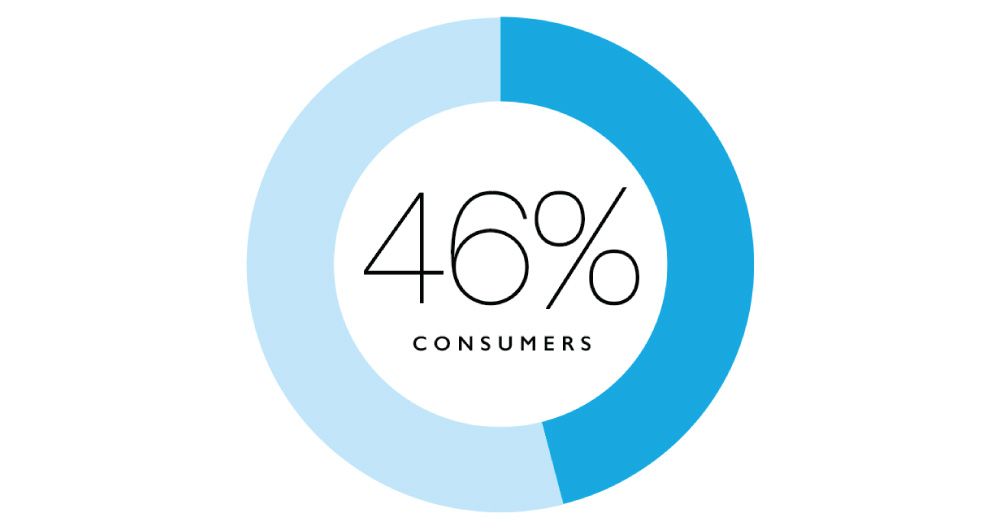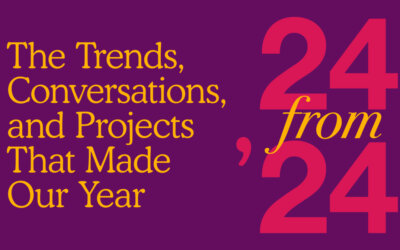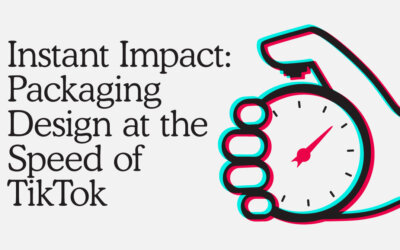Sustainability
The Environmentally Friendly Packaging Strategies Brands Can’t Ignore

Melissa Simmerman
Director, Strategy
July 20, 2023
Who else thinks it’s extraordinarily wasteful to open a single-use plastic bag, only to find more single-use plastic bags inside? From salad mixes and dinner kits to Lego building projects and electronics, we can’t seem to escape the bag-inside-a-bag problem. This guilt-inducing, “grit-your-teeth-and-throw-it-away” experience is not ideal from a moral standpoint, or a branding one.
When your enjoyment of a product or appreciation of its convenience is heavily compromised by the waste it creates, how can and should a brand respond?
Consumers, packaging, and the climate: It’s complicated
As consumers, we know that plastic packaging enables freshness, shelf life, and hygiene so we can safely buy the foods we want, when we want. But it’s hard to escape the photos of waterways and landscapes trashed by used plastic bags and bottles. In recent consumer survey work around sustainable packaging initiatives for a major national retailer, the Kaleidoscope team heard over and over that plastic—all plastic—is basically perceived as bad. It was associated with negative images of pollution and waste, and emotions like sadness and frustration.
Consumers in our study, who ranged from moderately to extremely eco-conscious, were concerned about items as small as the plastic ties that secure a product to a paper backing. “How do I recycle that?” was a common question around plastic packaging components. In many communities, that information can be found if you look hard enough, but finding it places a huge burden on already time-strapped and information-overloaded consumers.
Because of this, a new consumer expectation has emerged: the desire for brands to “do it for us.”
Environmental responsibility and the brand experience
Consumers assume that with corporations’ buying power, ingredient and material sourcing expertise, knowledge of legislation, and general company “bigness,” they can and should bear much of the responsibility for environmental stewardship. This may be easier said than done for brands, but nonetheless, consumers demand it.
Packaging is just one way consumers experience a brand, but it’s a key moment of truth and not solely because of its curb appeal at shelf. While a standout aesthetic is important, so too is the experience of holding and feeling a package, reading what’s on it, and imagining what eating, drinking, or using the product will be like. Perhaps most importantly, ethical consumers will ask themselves, how will buying this product—and managing its lifecycle—make me feel?

The Power of Awareness
46% of U.S. consumers say an understanding of how their purchase directly impacts the environment would encourage them to purchase eco-friendly products.
Mintel, Climate Complexity Consumer Trends 2022
So, if a brand must prove its environmental commitment via packaging, what will move consumers to believe it?
1. Plastic-free packaging materials
In this post, we noted that many vegan and vegetarian brands reinforce their values by choosing recyclable, biodegradable, or compostable packaging. While these attributes can come at a premium, aligning with your brand principles is worth the cost. Consumers notice authentic behavior and make decisions accordingly. (If you really want to walk the talk, check out this edible drinkware designed by Tomorrow Machine. This kind of innovation is the beginning of a plastic-less future.)
2. Refillable and reusable receptacles
From beauty to personal care to household cleaning, refillable bottles are showing up, but it remains to be seen how widespread the adoption of these options will be. Still, promoting reusable storage and post-product packaging re-use are clear ways to prove your brand’s usefulness in consumers’ daily lives.
3. Tech-driven transparent storytelling
From blockchain traceability to scannable packaging, forward-thinking brands are using technology to share how their products are sourced and processed, where they’re from, and who is behind them. Ultimately, becoming more environmentally responsible will cost all of us more money; according to Mintel, “brands will need to justify higher prices that will accompany more sustainable products. Communicating value will require stronger stories to help consumers understand both a product’s carbon footprint and why more sustainable products cost more.”
Brands We Love: Environmentally friendly packaging edition
Peach by Grove Collaborative
Grove Collaborative, already known for its sustainable household cleaning options, has launched Peach, a personal care brand committed to plastic-free packaging. And those colors…hard to resist.
Future Noodles
With a mission to “make our planet healthier, one noodle at a time,” UK-based Future Noodles food-safe cardboard packaging is “fully recyclable and has been responsibly sourced.” This is a great example of packaging as part of the brand experience; it’s the kind of proof consumers can touch, hold, and feel.
Blueland
Clean cleaning brand Blueland offers reusable glass bottles and refills packed in paper for its hand soaps, laundry soap, and household cleaners. Through a subscription service, consumers can ditch plastic-wrapped laundry pods and plastic hand soap bottles for good.
For a climate-positive future, match your brand experience to consumer expectations
TLDR: consumers expect brands to lead the way on sustainable packaging (we outlined 3 ways to do that above!), as well as educate them about how to properly recycle or reuse a package whenever possible. And brands with a commitment to environmental stewardship owe their audiences proof that they’re living up to that promise. According to Mintel, consumers “expect brands to keep exploring ways to phase out non-recyclable plastics and aim for zero waste.” As with any great effort, it will take collaboration, innovation, strategy, design, and real-world iteration to realize a better future for all of us.
More Insights
24 from ’24
Curious about the biggest trends and moments that shaped 2024? From viral consumer habits to industry innovations, our year-in-review dives into the stories that kept us inspired—and what they mean for the future.
Packaging Design at the Speed of TikTok
TikTok is transforming how brands approach packaging design, with trends moving faster than ever. Discover how CPG brands can keep up with this rapid pace, capitalize on viral moments, and stay ahead in an ever-evolving consumer landscape.
From Pixels to Prototypes: The Role of Physical Design in a Digital Age
AI tools are transforming product and packaging design, offering efficiency and accessibility. However, they can’t replace the value of physical prototyping. Discover how we combine AI’s creativity with hands-on experimentation, ensuring our designs resonate with human experiences.


